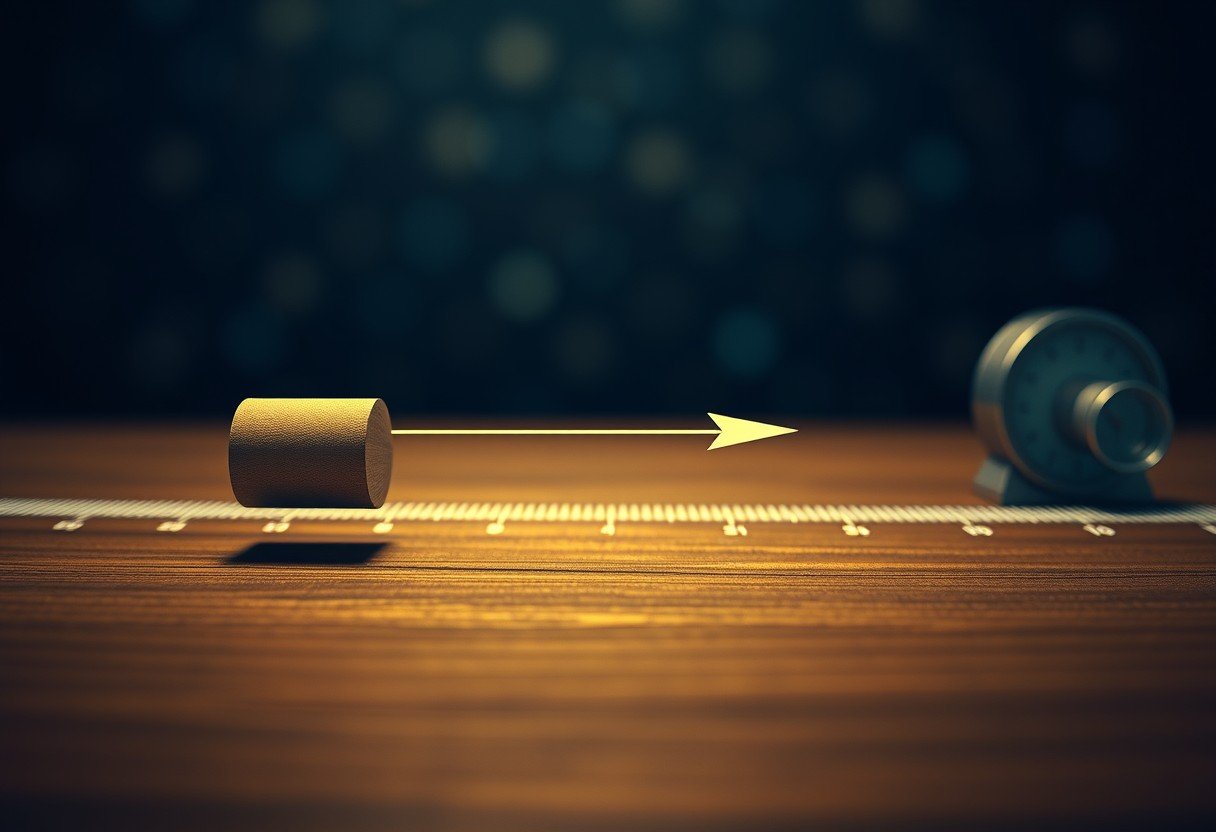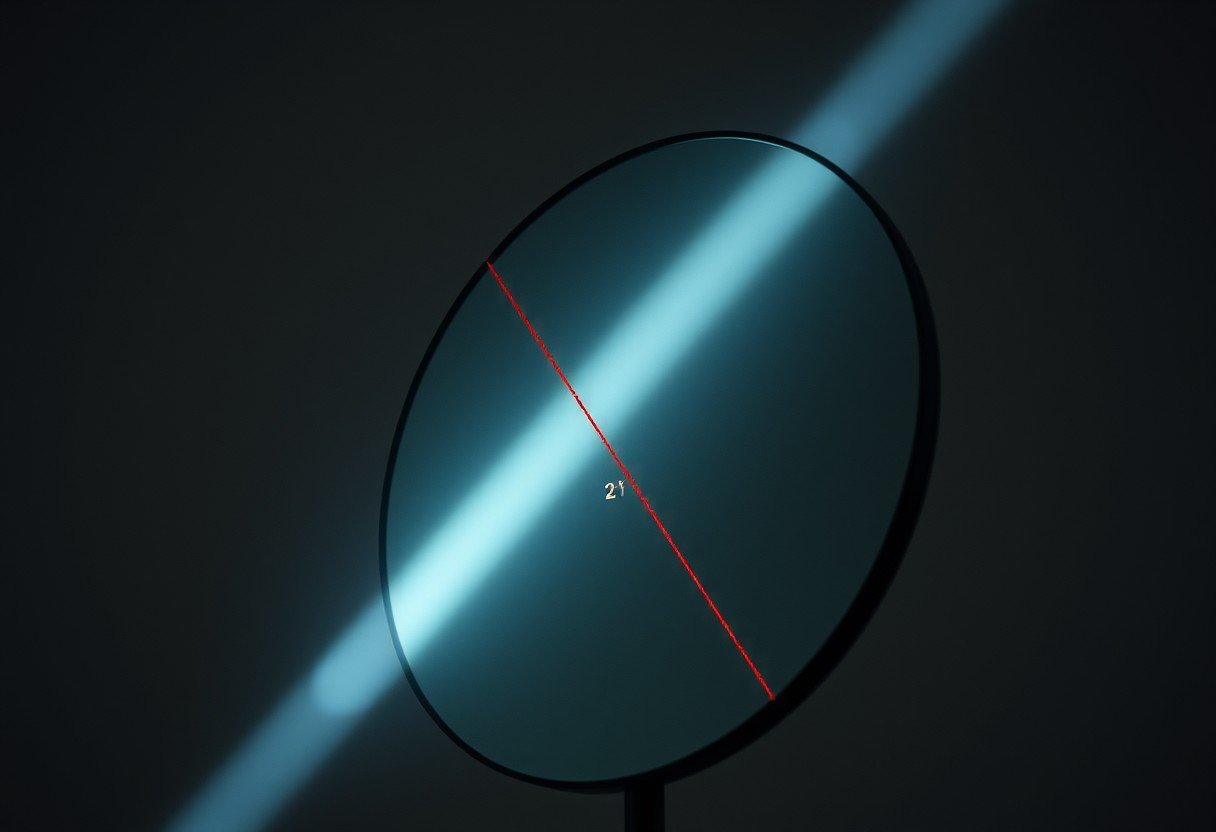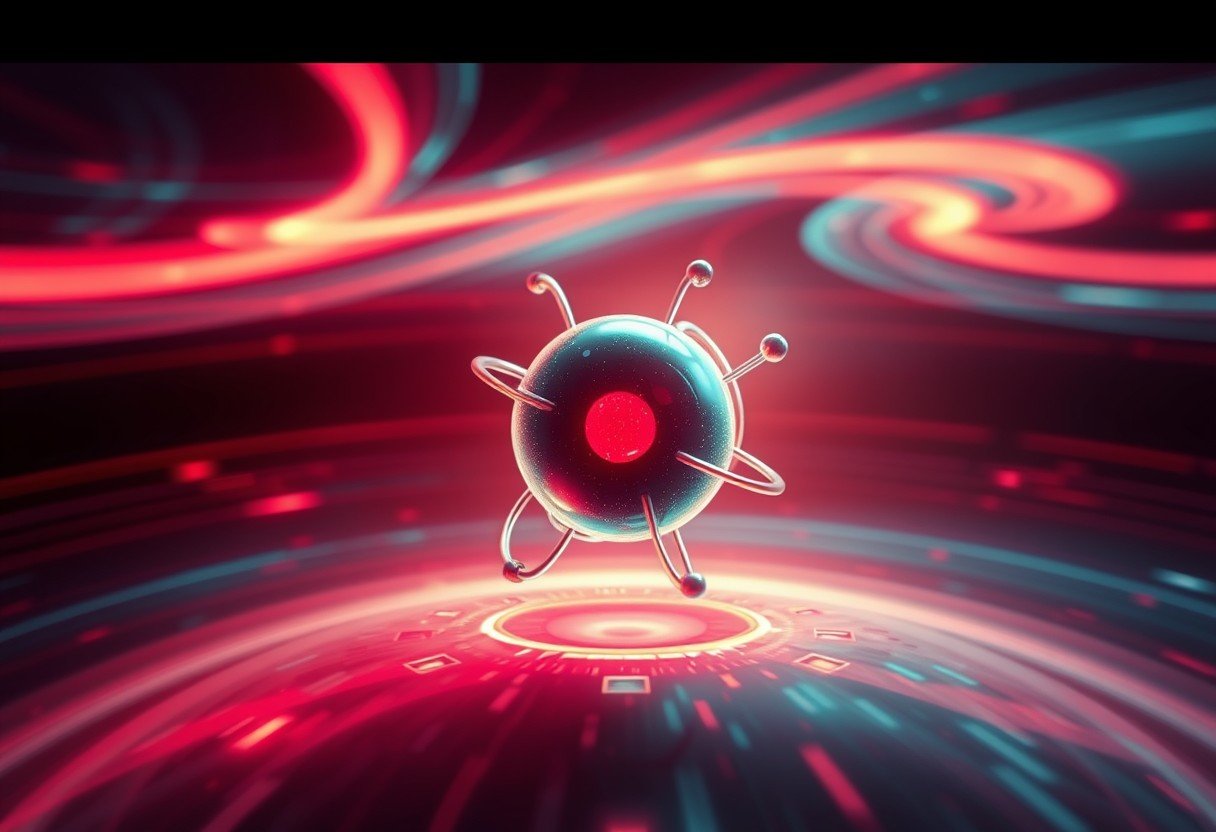When a constant force acts on an object, its momentum changes. This change depends directly on two simple things: how strong the force is and how long that force is applied. This fundamental principle of physics, explained by Newton’s second law, helps us understand and predict the motion of everything from a kicked soccer ball to a rocket launching into space. Understanding this relationship is key to grasping how objects move and interact in the world around us.
What is Momentum in Simple Terms?
Before we dive into how momentum changes, let’s quickly cover what it is. Think of momentum as an object’s “quantity of motion.” Every moving object has it, and it’s calculated by multiplying the object’s mass by its velocity (how fast it’s moving in a certain direction).
The formula for momentum is straightforward: p = mv, where ‘p’ is momentum, ‘m’ is mass, and ‘v’ is velocity. This means a heavy truck moving slowly can have the same momentum as a light car moving very fast. Mass and velocity are the two ingredients that make up momentum.
Because of this relationship, an object with more mass or more velocity has more momentum. This is why it’s much harder to stop a bowling ball than a tennis ball thrown at the same speed. The bowling ball has more mass, and therefore, much more momentum.
Understanding a Constant Force
A force is simply a push or a pull on an object. When we talk about a “constant force,” we mean a push or pull that doesn’t change its strength or its direction over time. Imagine pushing a box across a smooth floor with the exact same amount of effort the entire time; that’s a constant force.
A constant force causes a constant acceleration. This means the object’s velocity will change at a steady, predictable rate. It won’t suddenly speed up or slow down randomly. This consistency makes it much easier to calculate how an object’s motion will change.
The Direct Link Between Force and Momentum Change
The connection between force and momentum is described by Newton’s Second Law of Motion. While many know it as F = ma (Force equals mass times acceleration), it can also be stated in terms of momentum. Newton’s law says that the force applied to an object is equal to the rate at which its momentum changes.
This means if you apply a bigger force, you get a faster change in momentum. Pushing a swing gently will slowly increase the rider’s momentum, while a very strong push will change their momentum much more quickly.
This relationship is why both the strength of the force and the time it’s applied are so important. They work together to determine the final change in an object’s motion.
How Time Plays a Crucial Role
The amount of time a force is applied is just as important as the strength of the force. This combined effect of force and time is called “impulse.” The impulse is what actually changes the object’s momentum.
The formula for impulse is: Impulse = Force × time duration (Δt). And the key principle, known as the impulse-momentum theorem, is that the impulse is equal to the change in momentum (Δp). So, F × Δt = Δp.
This reveals something interesting: you can get the same change in momentum in different ways. A large force applied for a very short time can produce the same momentum change as a small force applied for a long time.
| Force Applied (Newtons) | Time Duration (Seconds) | Resulting Impulse (Change in Momentum) |
|---|---|---|
| 10 N | 5 s | 50 N·s |
| 50 N | 1 s | 50 N·s |
| 5 N | 10 s | 50 N·s |
Does the Object’s Mass Matter?
While the change in momentum (Δp) depends only on the force and time, the object’s mass plays a huge indirect role in what we actually see happen. The mass determines how much the object’s velocity changes as a result of the momentum change.
For the same change in momentum, a lighter object will experience a much larger change in velocity than a heavier object. Think about it: if you push a bicycle and a car with the same force for the same amount of time, they both gain the same amount of momentum. However, the bicycle will speed up significantly, while the car will barely move.
This is because momentum includes both mass and velocity. To accommodate the larger mass of the car, its change in velocity must be much smaller to achieve the same final momentum as the bicycle.
Key Factors to Remember
To summarize, when a constant force is applied to an object, its change in momentum is determined by a few critical factors. It’s essential to consider all of them to fully predict how the object’s motion will be altered.
The primary factors are straightforward and directly linked to the concept of impulse.
- The Magnitude of the Force: This is the strength of the push or pull. A stronger force will cause a greater change in momentum in the same amount of time.
- The Duration of Force Application: This is how long the force is applied. The longer the force acts, the greater the change in momentum will be.
- The Direction of the Force: The change in momentum will be in the same direction as the applied force. If the force opposes motion, momentum will decrease.
Understanding these elements allows for precise control and prediction in countless real-world scenarios, from designing safer cars to improving athletic performance.
Frequently Asked Questions
What is the relationship between impulse and momentum?
Impulse is the product of the force and the time it is applied (FΔt). The impulse-momentum theorem states that the impulse applied to an object is exactly equal to the object’s change in momentum (Δp).
What two factors determine an object’s change in momentum?
The change in momentum of an object depends on two main factors: the magnitude (strength) of the constant force applied and the duration of time that the force is applied.
How does mass affect momentum change?
Mass does not directly affect the change in momentum, which is determined by force and time. However, mass is crucial for determining how much the object’s velocity will change for a given change in momentum. A more massive object will have a smaller velocity change.
Can momentum change be negative, and what does it mean?
Yes, a change in momentum can be negative. This indicates that the object is slowing down. It happens when a force is applied in the direction opposite to the object’s initial motion, causing its final momentum to be less than its initial momentum.
If you double the force on an object, what happens to its change in momentum?
If you double the force and keep the application time the same, you will double the impulse. According to the impulse-momentum theorem, this will also double the object’s change in momentum.









Leave a Comment